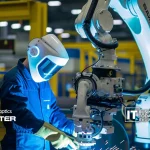日本の自動車メーカー、日産自動車が新しい運転支援システムのテストを開始しました。このシステムは、英国の新興企業Wayveの技術を使用。このパートナーシップの目的は、都市部における自動運転技術の強化。都市交通の課題と、車と歩行者の相互作用に注目。
運転支援技術の進歩
試作車は日産アリヤの電気自動車。多くのセンサーが搭載されています:カメラ11台、レーダー5台、LiDARセンサー1台。このセットアップにより、レベル2の自律走行が可能になります。システムが特定の運転タスクを管理します。しかし、ドライバーは常に注意を怠らず、コントロールできる状態でなければなりません。このテクノロジーは市街地のナビゲーションに役立ちます。歩行者を避け、突然の障害物にも素早く反応します。
Wayveが際立っているのは、機械学習を採用している点です。これにより、車両は地図からだけでなく、実際の運転から学習することができます。この方法により、柔軟でスケーラブルな自動運転ソリューションが可能になります。予測不可能なさまざまな都市環境を移動するのに最適です。
こちらもお読みください: MOTERとNEC、デジタルモビリティ推進で提携
日本のハイテク産業への影響
日本の提携は、新技術を自動車産業と融合させる狙いを強調。世界の自律走行車市場は、2030年までにUS$ 2兆ドルに達すると言われています。この成長は、新しいAIとデータ処理技術によるものです。日産はWayveと協力し、自動車を後押しし、地元のハイテク産業の成長を支援します。Wayveの日本における新しいセンターは、日本の技術スキルとインフラに対する関心の高まりを示すものです。
国際的な投資とチームワークは、日本のハイテク分野におけるイノベーションを促進します。これは競争を生み出し、新技術の成長をサポートします。自動車のAIシステムは、多くの産業で成長機会を生み出します。これは、データ分析、機械学習、センサー技術などの分野をカバーしています。
広範なビジネスへの影響
運転支援技術は多くのビジネス分野に大きな影響を与えるでしょう。ロジスティクスや輸送会社は、車両の自動化改善から恩恵を受けることができます。この変化は効率を改善し、コストを下げます。ライドヘイリングサービスは、安全性とサービスを向上させることができます。これはより多くの顧客を引き付ける可能性があります。自律走行車の台頭により、アップグレードの必要性が高まる可能性があります。これには、スマート交通システムや充電ステーションが含まれます。こうした変化により、投資と成長の新たな機会が生まれます。
課題と考察
自動運転技術は大きな可能性を秘めています。しかし、普及までにはいくつかの課題もあります。規制の枠組みを変える必要があります。自律走行車に関連する安全基準、責任問題、データ・プライバシーに関する懸念に対処しなければなりません。社会が自動運転システムを受け入れるためには、自動運転システムに対する社会の信頼がカギとなります。輸送の仕事がどのような影響を受けるのか、慎重に考える必要があります。悪影響を減らすための計画を立てる必要があります。
結論
日産自動車の自動運転技術へのシフトは、日本のハイテク産業と世界のビジネスシーンにとって大きな出来事。自律走行車の成長により、日本の交通とテクノロジーは変わるでしょう。これらの自動車は、日本が技術革新、規制、社会的影響に直面する際に重要な役割を果たすでしょう。







